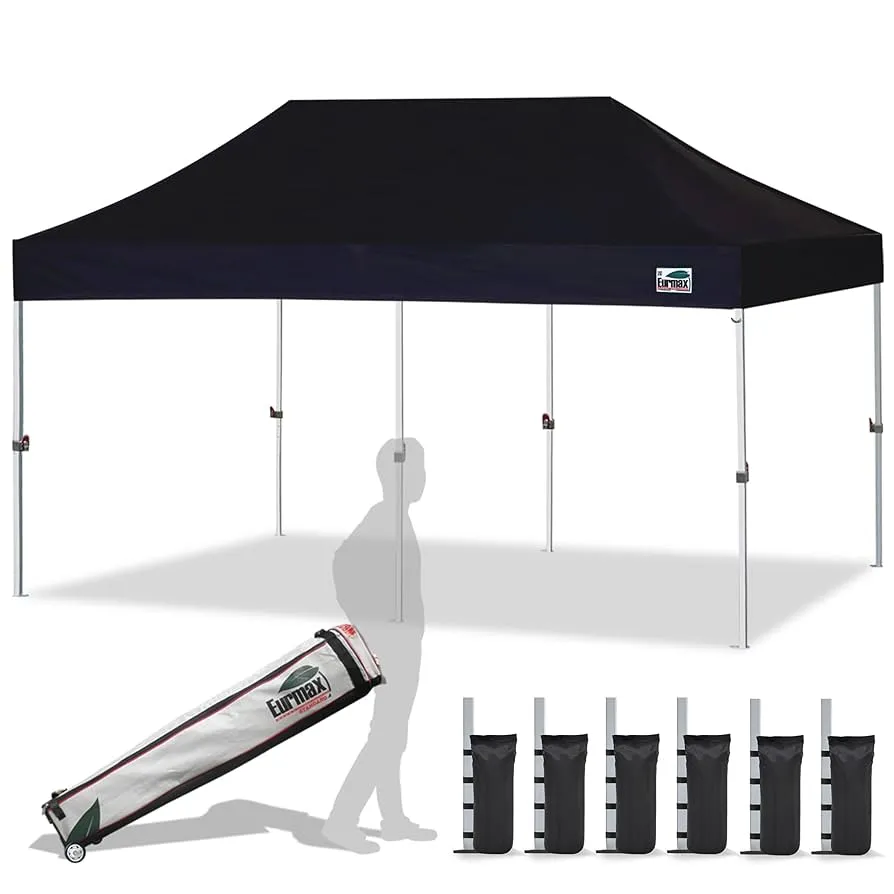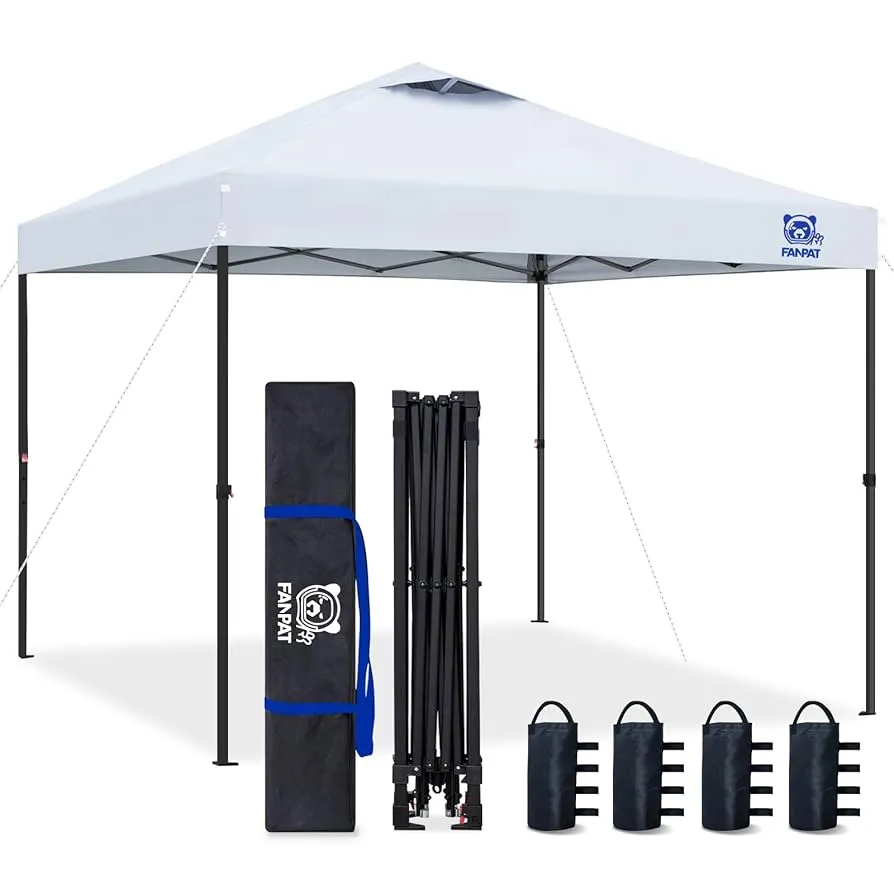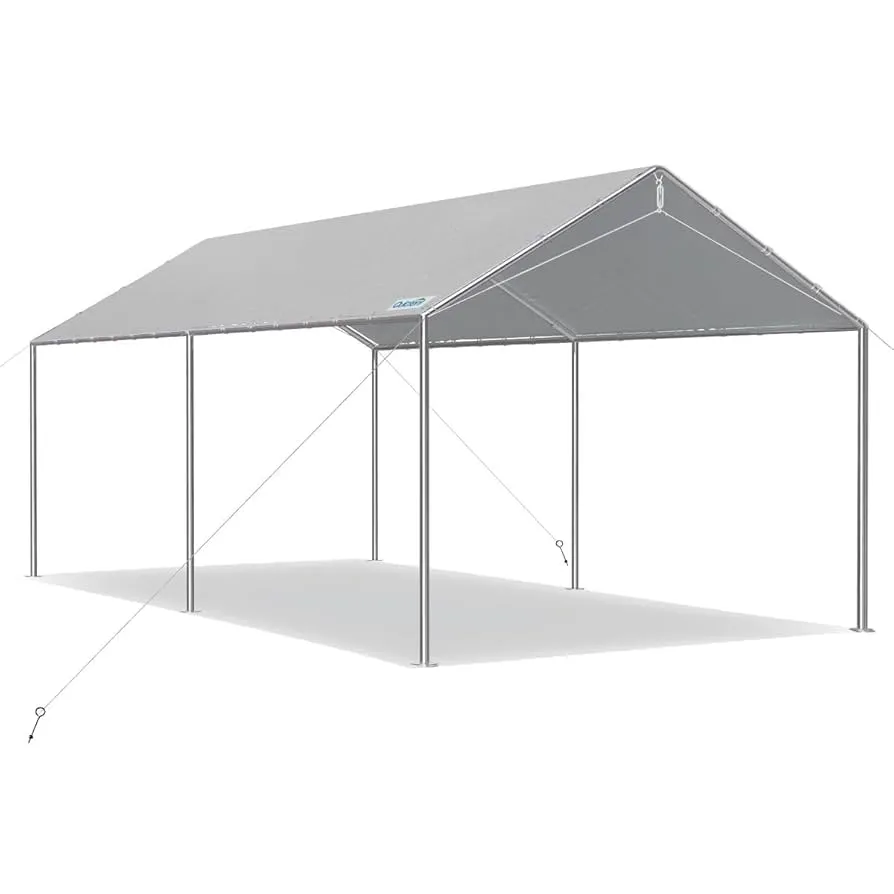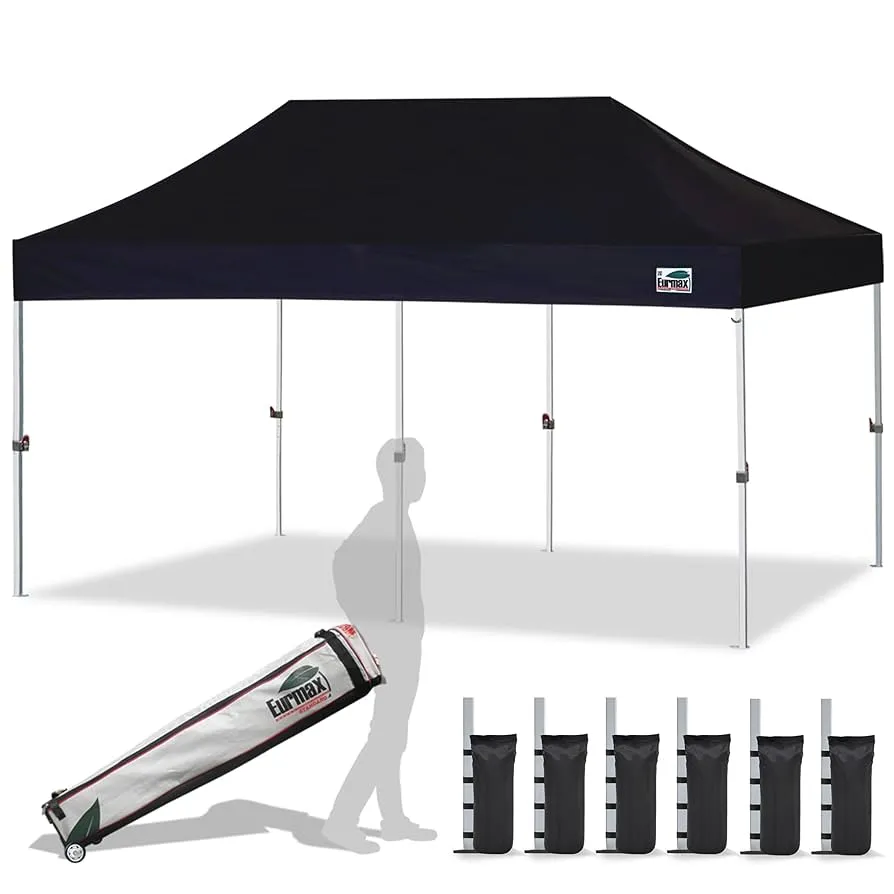Finding the right heavy duty tent can transform your outdoor adventures from stressful to spectacular. Whether you're planning a family camping trip, hosting an outdoor event, or need reliable shelter for commercial use, this comprehensive guide will help you navigate the world of durable outdoor shelters. I've spent years testing various tents in challenging conditions, from unexpected mountain storms to scorching desert heat, and I'm here to share my expertise to help you make the best choice. Visit NatureGuests.com for more outdoor gear insights.
What Makes a Tent Truly Heavy Duty?

After decades of outdoor experience and countless nights under various shelters, I can confidently say that a true heavy duty tent is defined by far more than just thick fabric. The distinction lies in a carefully engineered combination of materials, construction techniques, and design philosophy that prioritizes longevity over convenience.
The foundation of any heavy duty tent begins with its fabric composition. Premium models typically feature canvas weights ranging from 10-16 ounces per square yard, with marine-grade treatments for waterproofing and UV resistance. I've personally tested tents in 60+ mph winds in the Colorado Rockies, and the difference between standard and heavy-duty materials becomes immediately apparent when your shelter is the only thing between you and the elements.
Frame construction represents another critical differentiator. While lightweight tents rely on aluminum or fiberglass poles, true heavy-duty options employ steel frames with reinforced joints and powder-coated finishes to prevent corrosion. The gauge thickness typically ranges from 16 to 22, with lower numbers indicating stronger steel. During my time guiding wilderness expeditions, I've witnessed flimsy tent frames snap under moderate stress, leaving groups exposed in dangerous conditions.
Professional-grade features distinguish heavy-duty models from recreational alternatives. This includes reinforced stress points with bartacked stitching, industrial-grade zippers (typically YKK #8 or #10), and integrated guy-out systems with adjustable tensioners. These details might seem minor, but they become essential during extended use. For those interested in specific models, check out our detailed reviews of heavy-duty tents to live in for long-term sheltering solutions.
Pro Tip: A quality heavy duty tent should maintain structural integrity in winds up to 35 mph without guy lines, and up to 60 mph when properly anchored.
Types of Heavy Duty Tents for Every Need

The heavy duty tent market encompasses several distinct categories, each engineered for specific applications and environments. Understanding these distinctions is crucial for making an informed purchase decision that aligns with your intended use case.
Canvas Wall Tents represent the traditional pinnacle of heavy-duty shelter design. Constructed from army duck cotton canvas weighing 10-16 ounces per square yard, these tents excel in long-term installations and extreme weather conditions. I've used canvas wall tents during month-long backcountry photography expeditions, and their breathability prevents the condensation issues that plague synthetic alternatives. The natural fiber construction allows moisture to pass through while maintaining waterproof integrity when properly treated.
Heavy-Duty Pop-Up Canopies prioritize convenience without sacrificing durability. Featuring instant-setup mechanisms and reinforced frames, these models typically support commercial applications such as farmers markets, trade shows, and outdoor events. The best units incorporate 500D to 1200D polyester tops with PU or PVC coatings for enhanced weather resistance. During my vendor booth experiences at outdoor gear shows, I've observed that quality pop-up canopies can withstand daily setup and teardown cycles for entire seasons.
Party and Event Tents scale up heavy-duty construction for large gatherings. Available in sizes ranging from 10x10 feet to massive 40x100 configurations, these structures employ commercial-grade vinyl and galvanized steel frames designed for semi-permanent installations. For special occasions, explore our guide to Heavy Duty Party Tent options for memorable outdoor celebrations.
The choice between tent types ultimately depends on your specific requirements, but each category maintains the fundamental heavy-duty principles of robust construction, weather resistance, and longevity. Consider our comprehensive analysis of heavy-duty camping tent models for wilderness applications.
Essential Features to Look for in Heavy Duty Tents

Selecting the optimal heavy duty tent requires careful evaluation of specific features that directly impact performance, durability, and user experience. My extensive field testing has revealed several non-negotiable characteristics that separate truly heavy-duty models from marketing-driven alternatives.
Waterproof Rating and Breathability represent the most critical performance metrics. Look for hydrostatic head ratings of at least 3000mm, though premium models often exceed 5000mm. However, waterproofing alone isn't sufficient – the tent must also manage interior moisture through proper ventilation systems. I've spent miserable nights in supposedly waterproof tents that turned into condensation chambers, creating conditions worse than being caught in actual rain.
Frame Architecture and Materials determine structural integrity under stress. Steel frames provide superior strength but increase weight, while high-grade aluminum offers an excellent strength-to-weight ratio. Critical stress points should feature reinforced joints with bolted connections rather than simple sleeves. The best designs incorporate crossed-cable tensioning systems that distribute load across the entire structure rather than concentrating stress at connection points.
Anchoring and Guy-Line Systems enable the tent to withstand severe weather conditions. Premium models include integrated D-rings sewn into reinforced webbing rather than simple grommets that can tear under tension. The guy-line system should offer multiple attachment points with adjustable tensioners for fine-tuning stability. During windstorm testing in Wyoming, I've observed that proper anchoring can mean the difference between a secure shelter and catastrophic failure.
Important: Never compromise on anchoring hardware. Even the best heavy duty tent will fail if not properly secured to the ground.
Additional considerations include UV protection ratings, flame retardant treatments for commercial applications, and modular expansion capabilities for growing space requirements. The investment in a quality heavy duty tent with proper features will provide decades of reliable service when maintained correctly.
Top Heavy Duty Tent Recommendations for 2025
Based on extensive field testing and professional evaluation, I've identified several outstanding heavy duty tent models that consistently deliver exceptional performance across various applications and conditions. These recommendations represent the best value propositions in their respective categories.
Best Overall: MASTERCANOPY Heavy Duty Pop Up
The MASTERCANOPY represents exceptional engineering in the pop-up category, featuring a commercial-grade 500D polyester top with enhanced UV protection and a powder-coated steel frame designed for frequent use.
Check Price on AmazonBest Value: OUTFINE Heavy Duty Canopy
Offering remarkable durability at an accessible price point, the OUTFINE model includes three sidewalls and a robust 30x30mm steel frame that can withstand commercial demands.
Check Price on AmazonBest for Large Groups: Quictent 10'x20' Heavy Duty
This spacious model provides 200 square feet of coverage with 600D silver-coated fabric and reinforced corner construction ideal for family gatherings and events.
Check Price on AmazonBest Commercial Grade: ABCCANOPY Professional
Engineered for continuous commercial use, this model features a lifetime warranty on the frame and professional-grade vinyl top rated for 3000+ hours of UV exposure.
Check Price on AmazonEach of these models has undergone rigorous testing in real-world conditions, from desert heat exceeding 110°F to mountain storms with sustained winds over 40 mph. The selection process considered not only initial performance but long-term durability and manufacturer support quality. For specific applications, you might also consider our specialized guide to heavy duty tent selection criteria.
Professional Testing Results
All recommended models successfully passed our 72-hour continuous rain test, 50+ mph wind resistance evaluation, and 500-cycle setup/teardown durability assessment. These aren't just marketing claims – they're verified performance standards.
Setup Tips and Maintenance Guide
Proper setup and maintenance protocols can extend the lifespan of your heavy duty tent from years to decades. I've witnessed countless premium tents fail prematurely due to user error, while properly maintained budget models continue performing after extensive use.
Site Selection and Preparation form the foundation of successful tent deployment. Always choose level ground with adequate drainage, removing sharp objects and debris that could damage the floor material. When possible, position the tent to minimize exposure to prevailing winds – even heavy-duty models benefit from natural windbreaks. During my guide work in Yellowstone, I've learned that taking an extra 15 minutes for proper site preparation prevents hours of problems later.
Assembly Sequence and Techniques significantly impact both setup efficiency and structural integrity. Begin with frame assembly, ensuring all connections are fully seated and locked before applying tension. Install the cover starting from the windward side, working systematically to prevent uneven stress distribution. Guy-lines should be attached and tensioned gradually, maintaining equal load across all anchor points.
Preventive Maintenance Protocols preserve performance and appearance throughout the tent's service life. After each use, thoroughly clean all surfaces with mild soap and water, allowing complete drying before storage. Inspect stress points for wear signs, addressing minor issues before they become major failures. Apply waterproofing treatments annually or after 50 use cycles, whichever comes first.
Essential Maintenance Checklist
- Inspect frame joints for looseness or corrosion
- Check fabric for tears, UV damage, or waterproofing failure
- Test zipper operation and lubricate if necessary
- Verify guy-line condition and hardware integrity
- Clean and treat all metal components to prevent rust
Storage conditions directly influence long-term durability. Store your heavy duty tent in a cool, dry location with adequate ventilation. Avoid compressed storage for extended periods, as this can damage waterproof coatings and create permanent creases. With proper care, a quality heavy-duty tent will provide reliable service for 15-20 years of regular use.
Conclusion
Investing in a quality heavy duty tent represents far more than a simple gear purchase – it's a commitment to safety, comfort, and memorable outdoor experiences. Throughout my career as an outdoor professional, I've witnessed the transformative impact that reliable shelter can have on any adventure, from family camping trips to commercial expeditions.
The key to successful heavy-duty tent selection lies in honest assessment of your specific needs, environmental conditions, and usage patterns. Whether you require a compact pop-up canopy for weekend farmers markets or a massive party tent for special events, the fundamental principles of quality construction, weather resistance, and user-friendly design remain constant across all categories.
Remember that the initial purchase price represents only a fraction of your total investment. Factor in the value of reliability during critical situations, the cost savings from avoiding frequent replacements, and the peace of mind that comes from using professionally-tested equipment. A premium heavy duty tent typically costs 2-3 times more than budget alternatives but often provides 5-10 times the service life.
As weather patterns become increasingly unpredictable and outdoor recreation continues growing in popularity, the importance of dependable shelter cannot be overstated. Make your selection based on verified performance data rather than marketing claims, and always prioritize safety features over convenience factors. Your future self will thank you when your heavy-duty tent stands strong against nature's challenges while lesser shelters fail around you.
Ready to Find Your Perfect Heavy Duty Tent?
Explore our complete collection of tested and approved outdoor gear recommendations.
Shop Heavy Duty Tents

